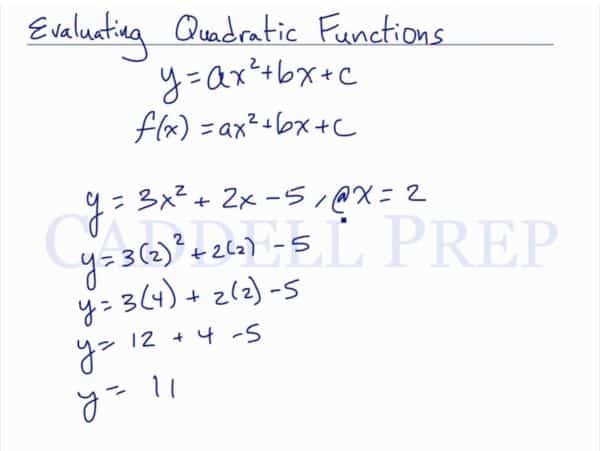In this video, we are going to look at how to evaluate quadratic functions. Quadratic functions are written in the form or
. After you finish this lesson, view all of our Algebra 1 lessons and practice problems.
For example:
When given at x=2, we substitute 2 in for where we see x.
Remember to always plug in values in parenthesis (to avoid confusion with signs). Then, this can be simplified to
and even further to
to get a final answer of
Example of Evaluating Quadratic Functions
Example 1
where
So let’s substitute.
Example 2
; find
So let’s substitute.
Video-Lesson Transcript
Let’s go over how to evaluate quadratic functions.
Quadratic functions have this form:
The most important thing to note here is the presence of . This is the highest exponent.
Or this form:
One quadratic function could be
where
So let’s substitute.

Let’s look at another example in a different form.
,
Now, let’s substitute.


